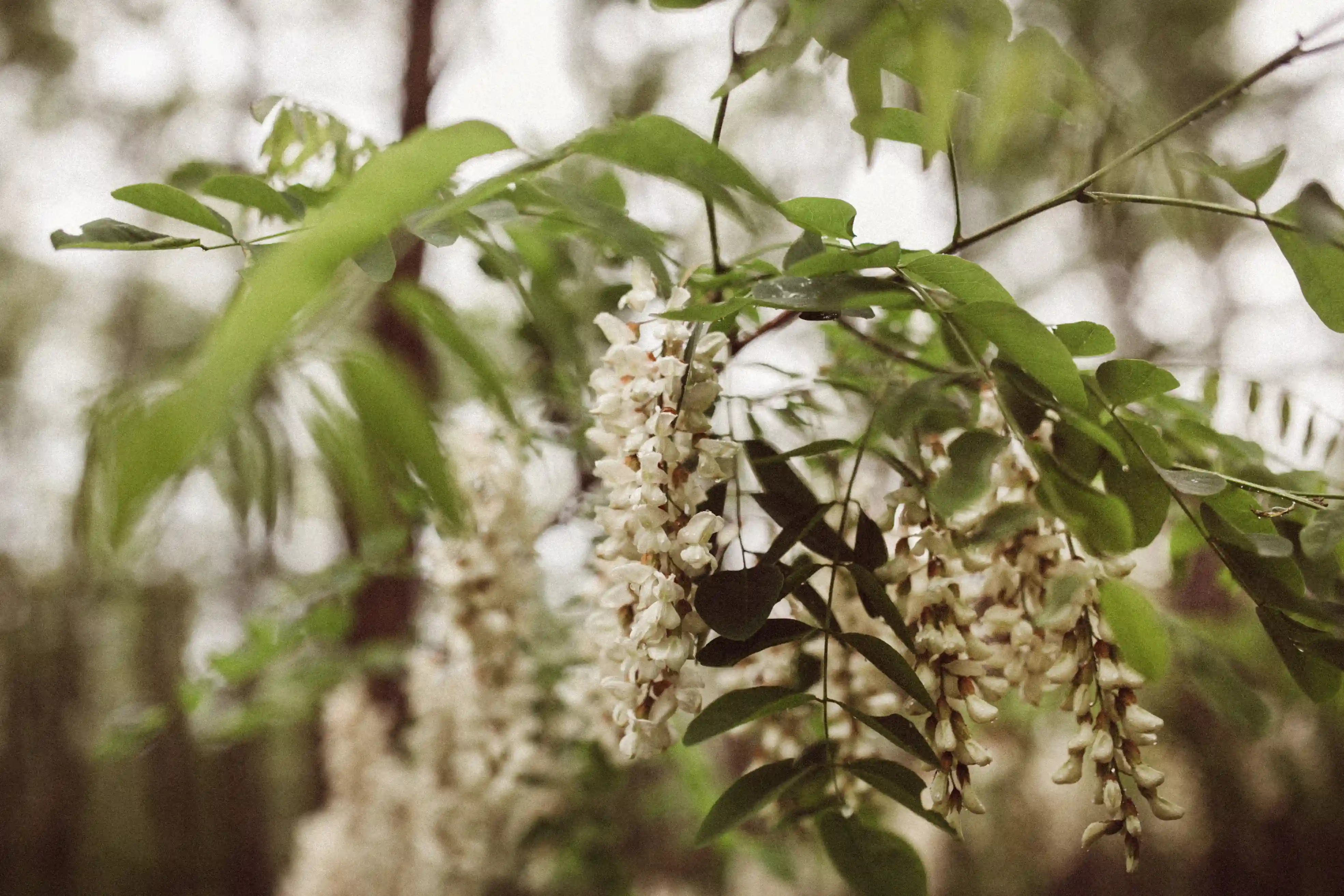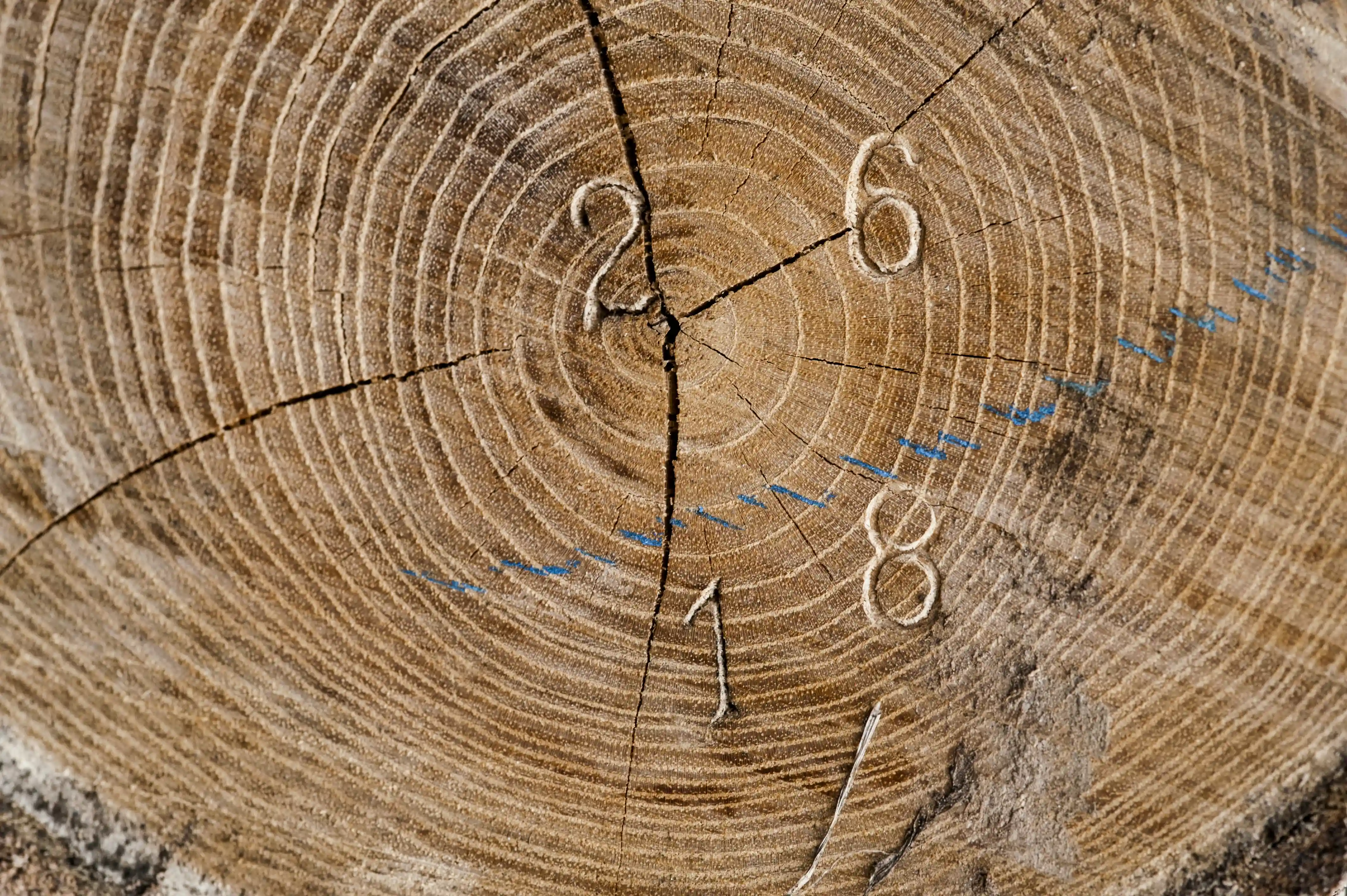This article provides a clear, research-based overview separating black locust tree toxicity from the safety of finished black locust wood, so homeowners, architects, and builders can make informed choices about this sustainable material.
Tree Toxicity Profile – What the Research Says
The black locust tree (Robinia pseudoacacia) contains naturally occurring compounds — primarily robinin and phasin, which are lectins that can interfere with protein synthesis. These substances are found in the bark, leaves, flowers, and seeds, and can be toxic to grazing animals or humans if ingested.
However, these compounds are not present in the solid heartwood, which is the part used for lumber. Once the wood is harvested, debarked, and air-dried, those natural toxins are no longer active.
Scientific findings show:
- Toxicity occurs only through ingestion of raw plant material, not contact.
- The heartwood used for decking, siding, and pavers is chemically inert and non-toxic.
- There is no research evidence of toxicity from finished black locust lumber.
Summary:
The black locust tree’s toxicity applies only to parts not used in woodworking. Once processed, black locust lumber is safe, stable, and suitable for direct human and animal contact.

Our Product – Finished Black Locust Lumber Is 100% Non-Toxic and Air-Dried
At Black Locust Lumber, all of our wood is milled, air-dried, and 100% chemical-free. We never use preservatives, synthetic coatings, or kiln drying.
Why Air-Drying Matters
Unlike kiln drying, which can over-dry the wood and cause movement when re-exposed to humidity, air-drying allows the wood to reach its natural equilibrium moisture state. This ensures dimensional stability and long-term performance outdoors.
Key benefits of air-dried black locust wood:
- Naturally seasoned and non-toxic
- Maintains structural integrity in outdoor conditions
- Avoids checking, cracking, or surface tension from rapid moisture changes
Summary:
By preserving the wood’s natural balance, we deliver durable, dimensionally stable, and eco-friendly black locust lumber — free from chemicals or artificial treatments.
Why the Tree’s Toxicity Doesn’t Apply to Finished Lumber
The toxic compounds in black locust are located in parts of the tree not used for lumber — such as bark, sapwood, and seeds. During milling and drying, those materials are removed, and the remaining heartwood becomes chemically stable.
What Makes Black Locust Durable
The wood’s legendary resistance to rot, insects, and moisture comes not from harmful toxins but from natural extractives — compounds that act as built-in preservatives without posing a health risk.
Summary:
Once processed, black locust wood is chemically inert and completely safe. The tree’s natural defenses become the very reason it performs so well in outdoor architecture, decking, and fencing — without any need for chemical treatment.
Scientific References & Supporting Data
- PubMed (2004) – “A Rare Ingestion of the Black Locust Tree”: documents human toxicity only after eating bark, unrelated to lumber use.
- South African Journal of Botany (2019) – “Toxicity in Livestock of Black Locust (Robinia pseudoacacia)”: confirms toxicity limited to foliage and bark.
- USDA NRCS Plant Guide – lists bark, leaves, and seed pods as toxic; wood is not included.
- Colorado State University Poisonous Plant Database – verifies ingestion toxicity only, not from processed wood.
Summary:
Scientific literature consistently shows that black locust toxicity applies to green plant tissue, not the finished, dried wood used in construction.
Practical Takeaways for Builders & Homeowners
If you’re asking, “Is black locust wood toxic?”, here’s the short answer: No.
Black Locust Lumber = Safe, Non-Toxic, and Chemical-Free.
Key Points:
- The tree’s bark and leaves contain toxins, but finished boards do not.
- Black locust uses include decking, fencing, furniture, and siding — all safe for contact.
- Its natural density and extractives provide decay resistance without added chemicals.
- Standard dust protection (masks, ventilation) is sufficient during sanding or cutting — similar to any other hardwood.
Summary:
By clarifying the difference between the living tree and the finished wood, builders and designers can confidently specify black locust wood in sustainable projects knowing it is 100% safe and toxin-free.

Finishes & Oils – Why We Recommend Leaving It Natural
Because black locust wood is dense and close-grained, oils and stains tend to sit unevenly on the surface. They can cause blotching, discoloration, or tacky residue.
Our Recommendation:
- Leave the wood completely untreated.
- Allow it to weather naturally to a soft, silver-gray patina.
- Avoid oils or stains that require ongoing maintenance.
Summary:
The best way to preserve black locust’s natural beauty is to leave it unfinished. It weathers gracefully, maintains uniform color, and requires no reapplication — the most authentic, low-maintenance, and sustainable finish possible.
Conclusion
Black locust wood stands apart as one of the most durable, sustainable, and safe hardwoods in the world. While the living tree contains compounds that can be toxic when ingested, finished black locust lumber is non-toxic, chemical-free, and ideal for outdoor architecture.
From decking and fencing to siding and furniture, it performs naturally without preservatives — combining strength, beauty, and environmental responsibility.
When it comes to eco-friendly design, black locust uses continue to expand — proving that nature’s durability doesn’t need chemical enhancement.








